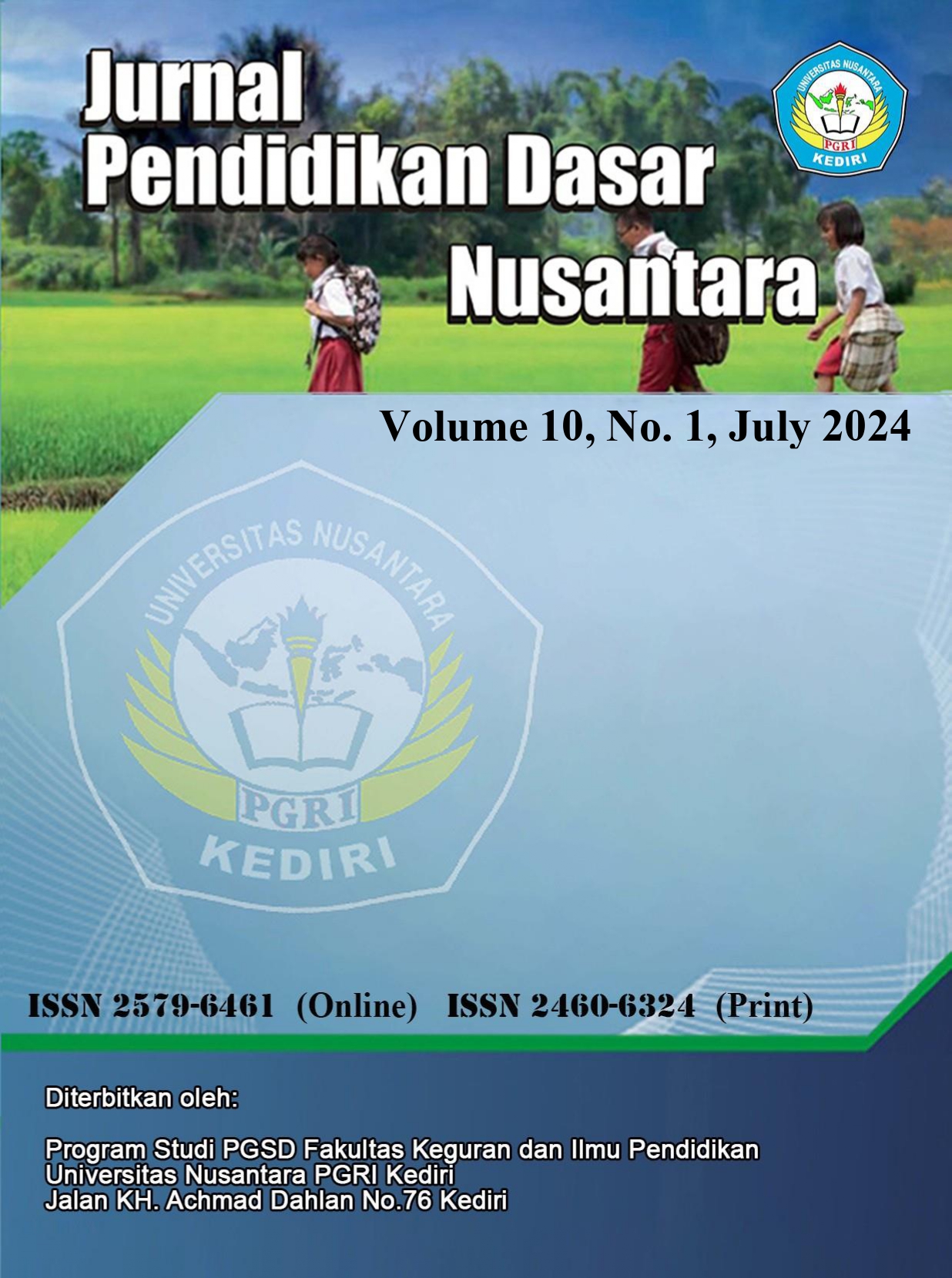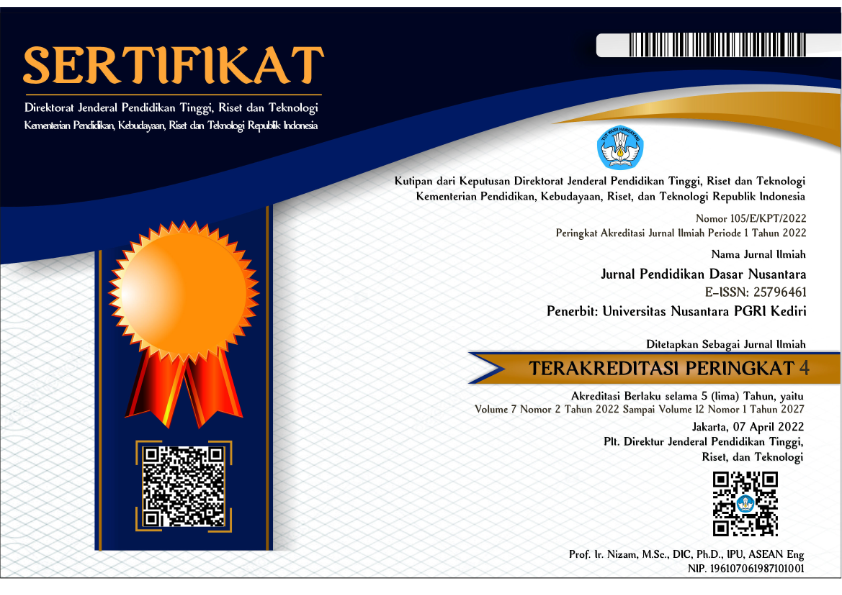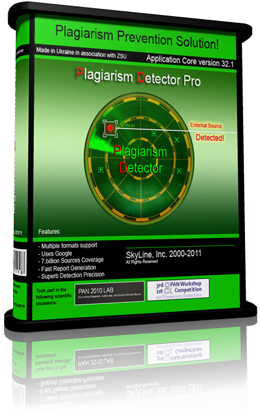Creative Artwork of Elementary School Children's Dance Drama Performance Based on Folklore (Folklore) of Kediri City
DOI:
https://doi.org/10.29407/jpdn.v10i1.22742Keywords:
creative works, dance drama, elementary school children, folk talesAbstract
Problems encountered related to art education include the rareness of alternative literacy of art forms for elementary school students based on culture. Local art products such as the Panji story will be very valuable if elaborated in the world of children in the form of performing arts. Involving children in the creative process of practicing art can provide empirical experience to improve their creativity. This study aims to determine the level of validity, originality of the work and the applicability of drama dance performance art works for elementary school children. The method of developing this drama dance art work is carried out with the stages of observation, exploration, composition and evaluation. The results of the study showed that the product of the creation of elementary school children's drama dance performance art based on folklore is very valid/suitable for use. This is evidenced by the score of 4.80 obtained by the dance expert validator. The validation results are related to the variety of movements, floor patterns, costumes and make-up. While the second validator obtained a score of 5 which means that the Panji Laras drama dance product/work is very valid/suitable for use. The validation results include the level of originality of the work, novelty and applicability for elementary school children. Thus, the work of dance drama performance art entitled Panji Laras is very valid/worthy of being used.
Downloads
References
Adawiyah, Aenur Roiatul, and Rizki Umi Nurbaeti. 2023. “Pelatihan Tari Kreasi Sebagai Bentuk Apresiasi Seni Tari.” JAMU : Jurnal Abdi Masyarakat UMUS 3(02):150–56. doi: 10.46772/jamu.v3i02.1051.
Ardini, Ni Wayan, Wayan Setem, Ni Made Ruastiti, I. Gusti Putu Sudarta, I. Nyoman Suardina, Wayan Sudiraya, and I. Wayan Rai. 2022. Ragam Metode Penciptaan Seni. Vol. 1.
Bachruddin, Syam. 2023. “767-Article Text-4002-1-10-20230328.” 4(2):130–39.
Budiyono, Sunu Catur. 2018. “Cerita Panji Dalam Perspektif Sejarah.” Jurnal Budaya Nusantara 1(2):141–46. doi: 10.36456/b.nusantara.vol1.no2.a1575.
Cindelaras, Karya Tari, and Laporan Karya Seni. 2017. “Karya Tari ‘ Cindelaras .’”
Irawana, Tri Juna, and Desyandri Desyandri. 2019. “Seni Musik Serta Hubungan Penggunaan Pendidikan Seni Musik Untuk Membentuk Karakter Peserta Didik Di Sekolah Dasar.” Edukatif : Jurnal Ilmu Pendidikan 1(3):222–32. doi: 10.31004/edukatif.v1i3.47.
Kamal, Zahara. 2015. “Nyanyian Anak Balam: Terapi Mistik Perdukunan Ke Seni Pertunjukan Rabab Pasisie Di Pesisir Selatan Sumatera Barat.” Humanus 14(2):165. doi: 10.24036/jh.v14i2.5683.
Leonangung Edu, Ambros, and Vitalis Tarsan. 2019. “Pendidikan Seni Musik Tradisional Manggarai Dan Pembentukan Kecakapan Psikomotorik Anak.” International Journal of Community Service Learning 3(1):1. doi: 10.23887/ijcsl.v3i1.17484.
Pujaastwa, Ida Bagus Gde. 2016. “Teknik Wawancara Dan Observasi Untuk Pengumpulan Bahan Informasi.” 1–11.
Putra, I. Gede Gunadi, Ni Made Haryati, Ni Made Liza Anggara Dewi, and A. A. Trisna Ardanari Adipurwa. 2023. “Pembelajaran Tari Rejang Dedari Dan Budaya Literasi Di Banjar Kajeng, Desa Pemogan, Denpasar Selatan.” Abdi Widya: Jurnal Pengabdian Masyarakat 2(1):45–52. doi: 10.59997/awjpm.v2i1.2225.
Ratri, Asri Kusumaning. 2016. “Penerapan Metode Penciptaan Lagu Anak Berbasis Tema Untuk Guru TK Negeri Pembina Srengat Blitar.” Jurnal Online STKIP PGRI Tulungagung 2(1):25–43.
Sari, Ayu Titis Rukmana, and Wahyudi. 2021. “Cipta Karya Seni Tari Anak Sekolah Dasar Berpijak Pada Permainan Tradisional.” Jurnal Pendidikan Dasar Nusantara 7(1):233–43. doi: 10.29407/jpdn.v7i1.16302.
Setiowati, Shintya Putri. 2020. “Pembentukan Karakter Anak Pada Lagu Tokecang, Jawa Barat.” Jurnal Ilmu Budaya 8(1):172. doi: 10.34050/jib.v8i1.9980.
Sungkowati, Yulitin. 2021. “Pandangan Masyarakat Kediri Terhadap Tokoh Dewi Sekartaji (The View of Kediri Society toward Character of Dewi Sekartaji).” Sirok Bastra 9(2):135–50. doi: 10.37671/sb.v9i2.287.
Triwardhani, Ike Junita, Dewi Mulyani, and Raditya Pratama. 2023. “Literasi Budaya Lokal Bagi Anak Di Desa Jatisura.” Jurnal Obsesi : Jurnal Pendidikan Anak Usia Dini 7(2):1818–27. doi: 10.31004/obsesi.v7i2.3962.
Wahyudi, Kukuh Andri Aka, and Dhani Darmawan. 2017. “Pengaruh Ekstrakurikuler Karawitan Terhadap Sikap Kebersamaan Siswa Di SDN Jombatan 3 Jombang.” Jurnal Pinus 3(1):60–68.
Wiflihani. 2016. “Fungsi Seni Musik Dalam Kehidupan Manusia.” Jurnal Antropologi Sosial Dan Budaya 2(1):101–7.
Wiralangkit, Katuang. 2021. “UPT Perpustakaan ISI Yogyakarta UPT Perpustakaan ISI Yogyakarta.” Reimajenasi Timbre: Nostalgia Bunyi Melalui Komposisi Musik 3:1–16.
Yuniarni, Desni. 2021. “Persepsi Guru Mengenai Pentingnya Pengenalan Kearifan Lokal Dalam Pembelajaran Bagi Anak Usia Dini.” Prosiding Seminar Nasional Bimbingan Dan Konseling Universitas Negeri Malang 32–37.
Yuwono, Pratik Hari. 2016. “Pengembangan Intelegensi Musikal Siswa Melalui Pembelajaran Musik Di Sekolah.” Khazanah Pendidikan Jurnal Ilmiah Kependidikan 10(1):25–38.
Downloads
Published
Issue
Section
License
Authors who publish with this journal agree to the following terms:
- Copyright on any article is retained by the author(s).
- The author grants the journal, the right of first publication with the work simultaneously licensed under a Creative Commons Attribution License that allows others to share the work with an acknowledgment of the work’s authorship and initial publication in this journal.
- Authors are able to enter into separate, additional contractual arrangements for the non-exclusive distribution of the journal’s published version of the work (e.g., post it to an institutional repository or publish it in a book), with an acknowledgment of its initial publication in this journal.
- Authors are permitted and encouraged to post their work online (e.g., in institutional repositories or on their website) prior to and during the submission process, as it can lead to productive exchanges, as well as earlier and greater citation of published work.
- The article and any associated published material is distributed under the Creative Commons Attribution-ShareAlike 4.0 International License

































